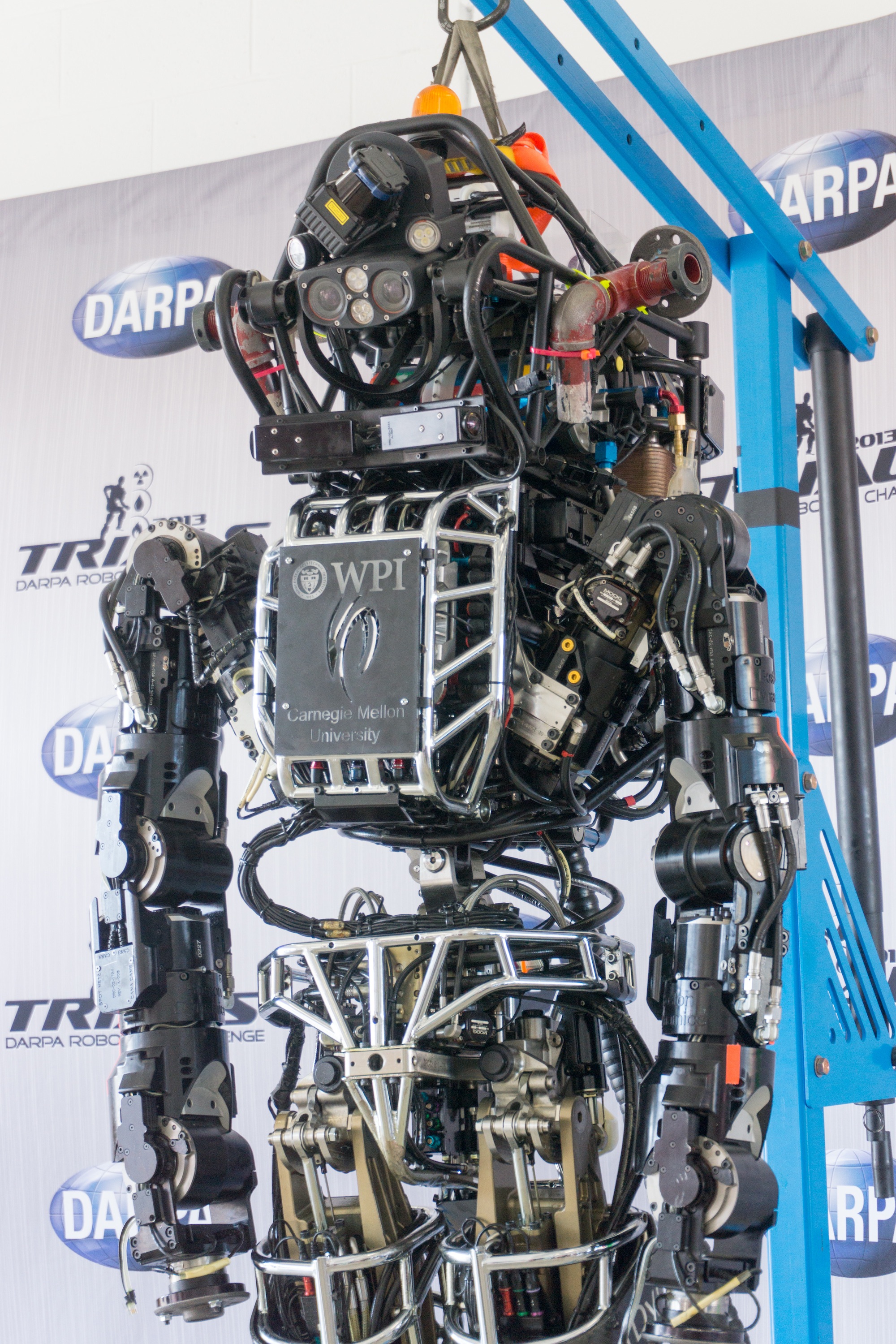
Photo courtesy DARPA
On the heels of Tartan Rescue’s CHIMP in the DARPA Robotics Challenge trials was another robot with CMU involvement—WARNER, a humanoid robot entered by Worcester Polytechnic Institute.
Four members of the WARNER team are from CMU’s Robotics Institute, including Chris Atkeson, a professor of robotics and human-computer interaction.
But there’s no rivalry with Tartan Rescue, Atkeson said. And like the CHIMP team, he expects the finals to be “much more challenging.”
WARNER placed seventh in the DRC Trials at Homestead-Miami Speedway, securing points for climbing a ladder, walking on rough terrain, manipulating a hose and turning valves. Also significantly, WARNER drove a Polaris Ranger all-terrain vehicle 250 feet in six minutes, the fastest time of any robot in the trials. The WPI-CMU team received the “Best in Task Vehicle Award” as a result.
The WPI-CMU team is using the 6-feet-2, 330-pound Atlas robot developed by Boston Dynamics. The principal investigator on the project is Michael Gennert, director of the Robotics Engineering Program at WPI, where he also serves as professor of computer science and electrical and computer engineering. Atkeson serves as a co-principal investigator along with Taskin Padir, an assistant professor of robotics engineering and electrical and computer engineering at WPI.
“My group is particularly interested in locomotion—walking, climbing the ladder, and getting into and out of the car,” Atkeson said. Using the Atlas robot allows the CMU group to focus on software and not worry about building or maintaining a custom robot, he said.
The disadvantage is that the WPI-CMU team can’t customize the robot for its approach, or the tasks that the DARPA challenge demands, Atkeson said.
“The driving task was one of the most demanding from a testing standpoint, and our team really did an outstanding job,” Matt DeDonato, who leads the WARNER team, said after the December trials. “We couldn’t be happier for the effort the team put forth on that task and throughout the competition.” Driving was considered a key part of the challenge, because first-responder robots can’t handle any other tasks at a disaster scene unless they can get to the disaster scene.
“The team is thrilled with the finish, and we’re looking forward to continuing to train WARNER for the next competition,” DeDonato said. “It’s been quite a ride for everyone, and I’m confident that we’re up for this next challenge.”
Atkeson said this is his first collaboration with Gennert and the WPI researchers. “They did very well on the simulation phase of the DARPA Robotics Challenge, and then invited me and my group to join them,” he said.
The CMU team collaborates with its colleagues in Worcester during weekly virtual meetings using Google Hangouts and periodic on-site, in-person visits, Atkeson said.
In case you’re wondering, WARNER isn’t named for CMU’s administration building, Warner Hall. The name is an acronym for WPI Atlas Robot for Non-Conventional Emergency Response.
You can follow the WPI-CMU team, and see video of WARNER in action, at http://robot.wpi.edu/drc/.
—Jason Togyer DC’96
Jason Togyer | 412-268-8721 | jt3y@cs.cmu.edu

